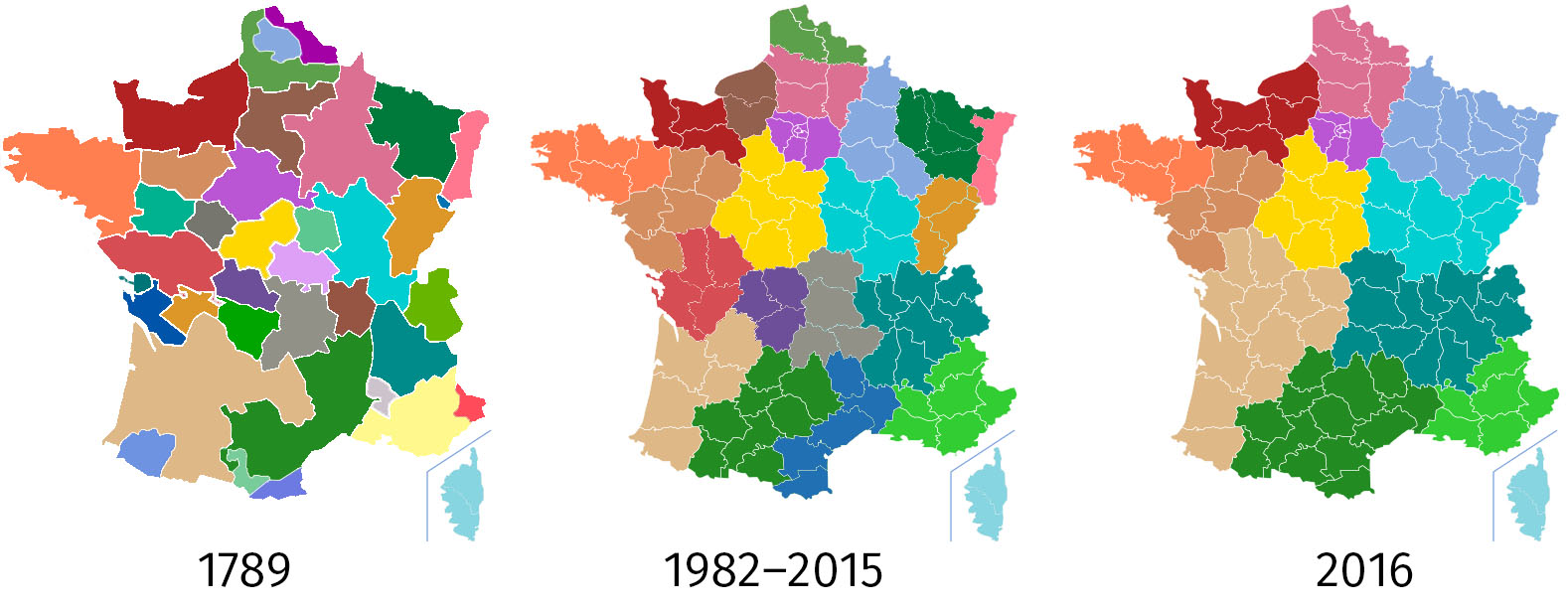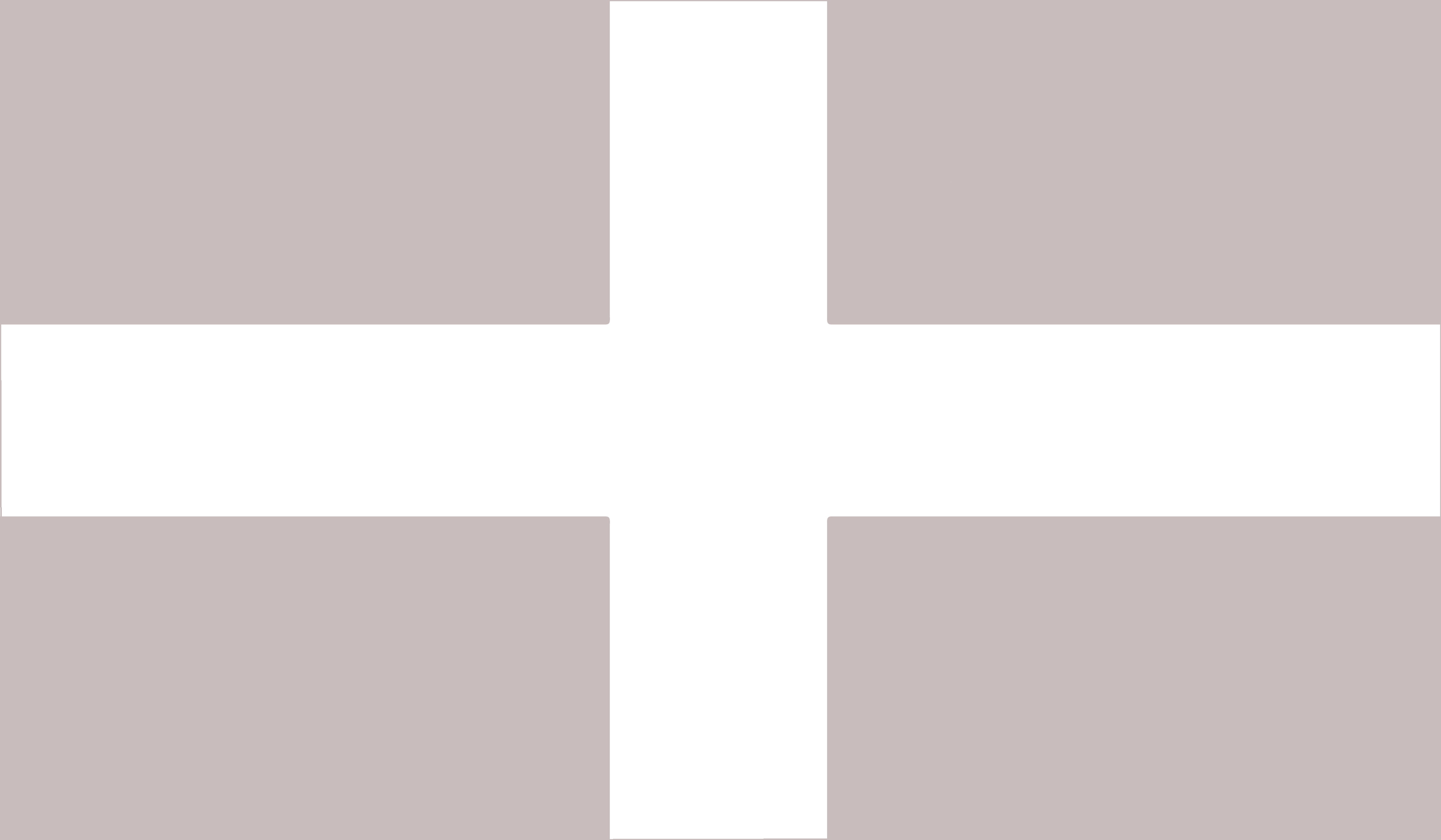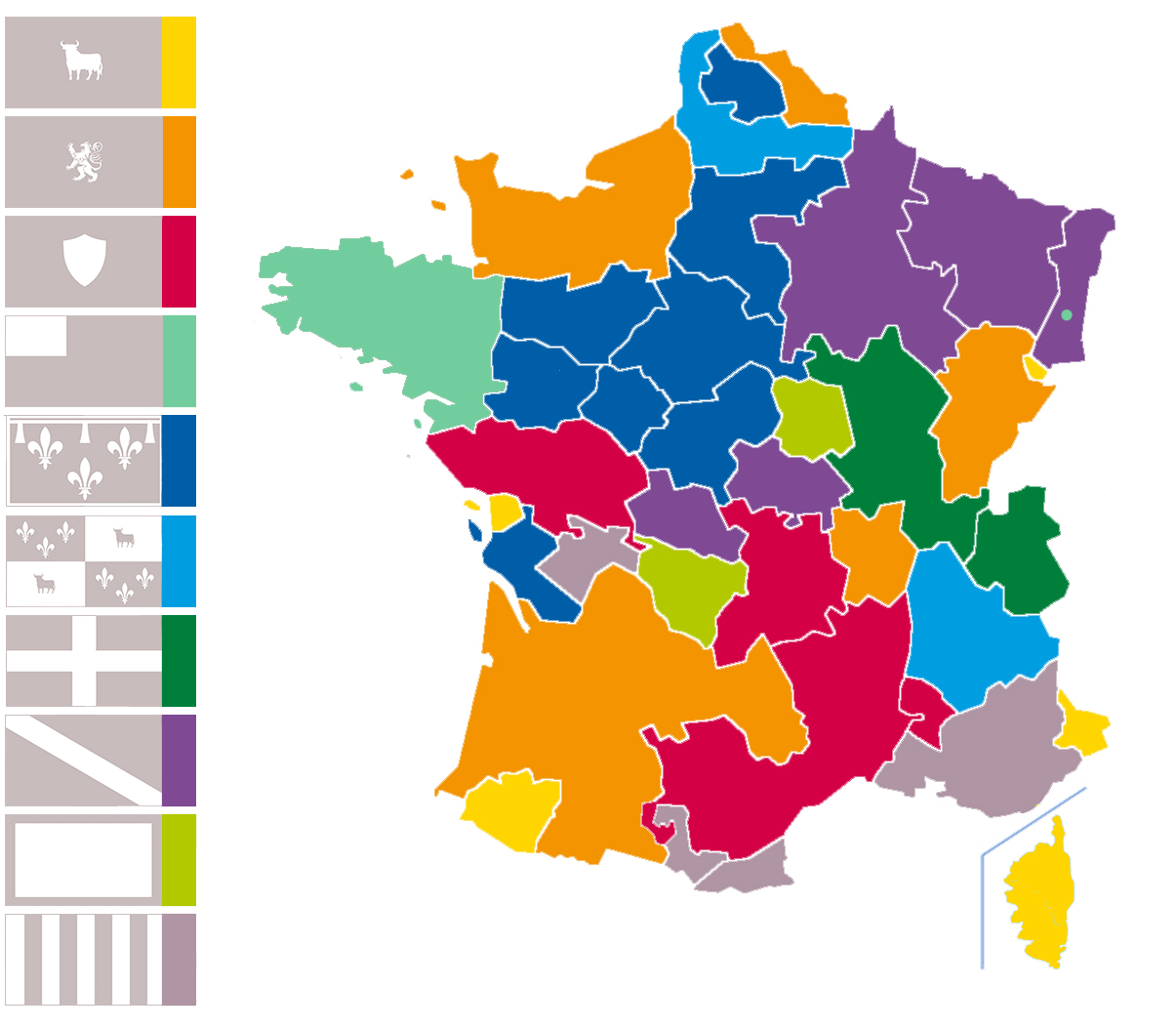Today’s France in its current borders exists since 1947. Until that date French borders did change a lot and were in hands of various political forces. At this moment, France has a complex administrative structure of the following form (starting with the largest administrative unit): regions (overseas regions), departments (overseas departments), arrondissements, cantons and communes. Recently, the administrative division at the regional level was changed, merging some regions into one; the names of these larger units consist of the names of all the previous regions (for example, Provence-Alpes-Côte d’Azur).

A dynamic map of French borders from 985 to 1947
However, current French territories do not entirely reflect the historical provinces of this territory. In modern times the flag and the coat of arms of a province can be regarded as one part of the cultural heritage of the historical provinces. In many countries there are regions or areas that have their own flag and coat of arms, but France can be of particular interest due to the historical authenticity and indisputability of these symbols.

Change of the administrative division at the regional level
In total, there are 39 historical provinces in France, five of them, at the time of existence, did not belong to the Kingdom of France: Comtat Venaissin, free imperial city Mulhouse, Savoy, Nice and Montbéliard.
Flags of the historical provinces of France can be divided into several groups, considering their structure and the use of certain symbols.
Monochrome Flags With a Living Creature
The first group stands out on the basis of the presence of a living creature on a monochrome canvas or almost monochrome as in the case of Nice. Being one of the symbols of Europe, a bull will be the symbol on the pattern for this type of flag.

Flags with a living creature pattern
Until 1755 (the year of accession to France) Corsica’s flag had a different look — white bandana covered the eyes of the Moor (Arabs and Berbers of the North-West Africa and Europe) and he had a ring in his ear.

Corsica’s flag until 1755
All that warned the African pirates who repeatedly infringed on the freedom of Corsica.

Monochrome flags with a living creature
Flag of Aunis, like many others, was derived from the coat of arms of the province which has a “crowned partridge”. A partridge, oddly enough, quite often appears on the coat of arms of the various regions. Flag of Nice also evolved from the coat of arms of the Nice’s earls. A red eagle is standing on three hills surrounded by the sea. Flag of Montbéliard also has its roots in a coat of arms. And the two cows with blue collars and horns are a symbol of Bearn.
Flags With a Lion
Of course, a lion is also a living creature, but the number of flags with these animals suggests that we should allocate them in a separate group. Without thinking twice, the pattern will be a lion with a monochrome background.

Pattern of flags with a lion
The lion is a very common creature in the heraldry of French flags. It might be due to the fact that the habitat of these animals was much larger or simply because the animal looks noble and beautiful.

Lion habitat
However, with regards to the flags of Aquitaine and Normandy, where the lions stand on three legs and “look” at the audience, they should rather be called leopards, as classical heraldic lions are only considered these that are standing on two legs and are in profile. In the same group, on the flag of Lyonnais, the heraldic lilies appear which will be discussed later.

Flags with a lion
Monochrome Flags With a Symbol

Pattern of monochrome flags with a symbol
The next group includes flags of the Comtat Venaissin, Languedoc, Poitou and Auvergne provinces.

Monochrome flags with a symbol
Canton
There are only two flags with a canton. The first flag is of the free imperial city Mulhouse, whose name is derived from the German “Mühle”, which is translated as a “mill”.

Flags with a canton pattern
The city was not always French and historically became a part of France only in 1798.
The Breton flag, second in this group, was created in 1923 and his name “Gwenn-ha-du” in Breton means “white and black”. Four white stripes symbolize the Breton regions — Léon, Trégor, Cornouaille and Vannes. The five white stripes symbolize the Rennes, Nantes, Dol, Saint-Malo and the Saint-Brieuc regions.

Flags with a canton
And the canton itself uses a heraldic symbol — the ermine fur. It was used on shields by the Germanic peoples, as it was easy to cut out various shapes from the fur.
Fleur-de-lis
Flags with the fleur-de-lis are very widespread in France.

Flags with the fleur-de-lis pattern
The lily is an incredibly ancient symbol, it can be found on the Assyrian bas-reliefs (third millennium BC). However, according to a French legend, the kind of the Franks Clovis I received it after Christianization from an angel as a sign of purification.

Flags with fleur-de-lis
Four Cantons
In this group we will put two more flags that use three heraldic lilies on two cantons and living creatures on the other two.

Four cantons pattern
The Dauphine area got its name from the coat of arms of dauphins, who were called so because of the image of dolphins on it.

Four Cantons
Flag of Picardy uses traditional symbols for this area — lions and heraldic lilies.
Symmetrical Cross

The pattern of flags with a symmetrical cross
This group has also two flags. The first is the flag of Savoy, which is quite different from the other flags of the country. However, Savoy became part of France only in 1794. Flag of Burgundy uses traditional lilies and diagonal stripes, each of the images has a border or a frame.

Flags with a symmetrical cross
Diagonal Stripe
There are quite a lot of such flags in France.

Flags with a diagonal stripe pattern
Flags of Bourbonnais and Marsh use heraldic lily. And the Lorraine flag uses three flying avalerions — fictional heraldic birds. Alsace flag has its roots in the flags of Bas-Rhin and Haut-Rhin. Although a red-white horizontal bicolor is sometimes used in the region, the presented flag is much more beautiful.

Flags with a diagonal stripe
The flag of Champagne uses the “meander” ornament, the history of which lasts almost from the origins of humanity.
Outer Boundary or Frame

Flags with a frame pattern
There are only two such flags — Nivernais and Limousin. These flags use already recognizable colors and symbols.

Flags with a frame
Yellow-Red Patterns
Pattern for these flags will be the Catalan coat of arms or the flag of Provence. This is due to the Spanish influence on these provinces.

The pattern of yellow and red flags
Roussillon in the course of history was part of Catalonia and only in 1463 the French occupied this area. Foix also has a close relationship with the history of Catalonia, at some point this region was merged with the Bearn province, which may not only explain the colors of Foix but also of Bearn. The coat of arms of the united county includes both the flag of Bearn and of Foix.

Yellow-red flags
About IX–XIII century the Provence region experienced Catalan influence. Perhaps, only Angoumois did not experience the influence of Catalonia, yet the flag of the region is also red and yellow.
It is worth looking at the map of France filled with the flags of historic areas and a map of French flags types. One can immediately see three groups with a clear geographical location. Thus, the Catalan flags with red and yellow stripes are located strictly in the south of France; only the Angoumois region stands out, whose flag, in general, is different from the Catalan stripes. Heraldic lilies are widespread, especially in the north and the center of the country. Diagonal stripes are represented by provinces in the north-east of France. Overall, the same types of flags are rarely scattered on different sides of the country as in most times a certain consistent pattern can be found in the location of a province and its flag.

Present map of France filled with flags of historic areas

French flags types map



























Comments